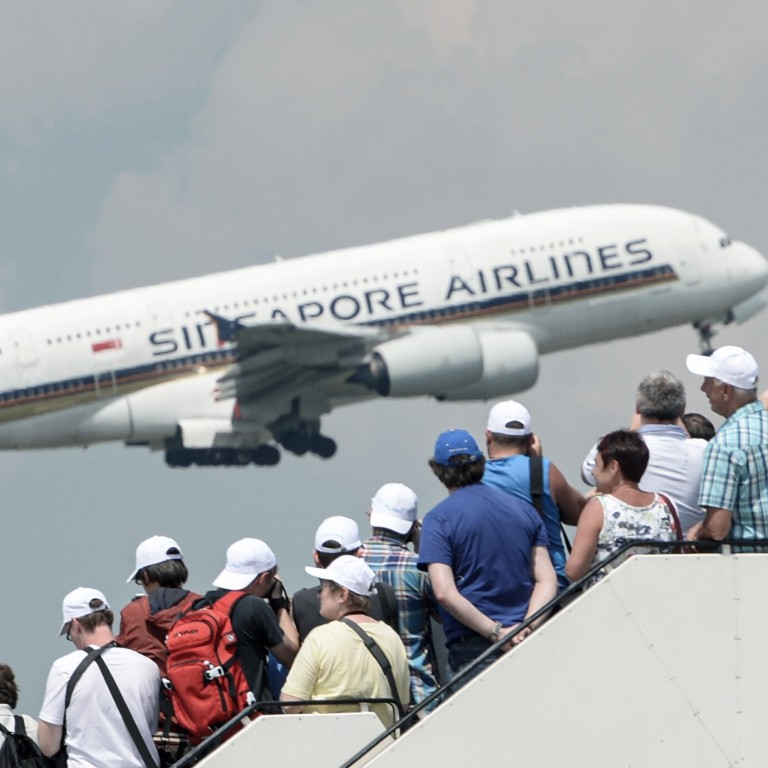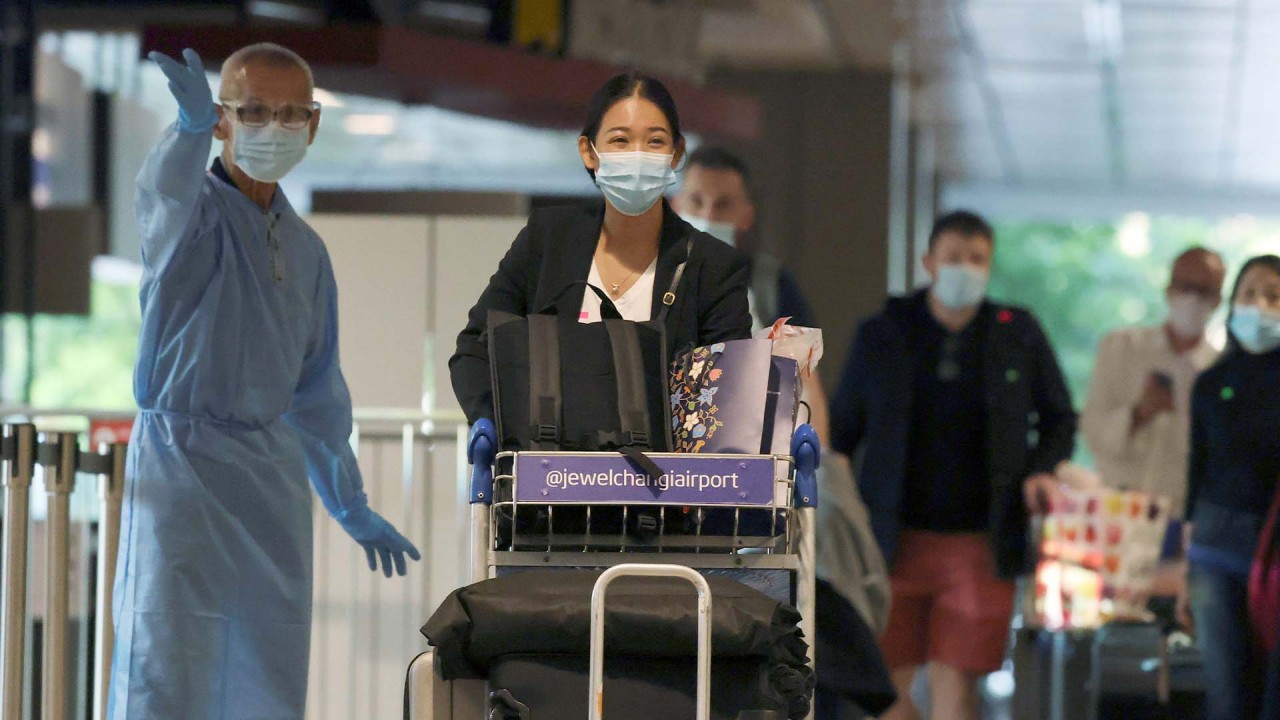
Coronavirus: Singapore leads the way as international air travel in Asia picks up pace
- By January, Singapore is poised to reach 84 per cent of the weekly flights to Europe as it had in March last year
- While there’s some renewed optimism, the reopening could be short-lived as Covid-19 cases and mutations continue to flare
By January, Singapore is poised to reach 84 per cent of the weekly flights to Europe as it had in March last year, before the clampdown on travel. And there’ll be 1,519 flights from the financial hub to elsewhere in Asia, compared with only 194 in May 2020, data from aviation analytics firm Cirium show.
“Singapore is leading the way here,” said Gary Bowerman, director of travel and tourism research firm Check-in Asia. “Countries in the region have to open up because almost two years without travel of all forms, economically it’s just not viable to stay closed.”
Airlines pivot away from Asia amid frustration with zero-Covid approach
Compared with air travel in the US and Europe, international traffic volume is still thin in the Asia-Pacific region, given that mainland China and Hong Kong remain closed off as they stick rigidly to a strategy of keeping Covid out.
China’s seat capacity is at pre-pandemic levels, according to Bloomberg’s flight tracker, which uses data from aviation specialist OAG to monitor the pulse of the comeback. That’s thanks to its massive domestic market rather than international capacity, which languishes at less than 10 per cent of where it was before the crisis.
Other countries are a way off 2019 levels because their reopening plans are in the early stages or have yet to kick in. Capacity for Asian carriers excluding those in China is 53 per cent below pre-Covid, according to OAG.

02:07
Singapore adds 8 more countries to quarantine-free list for vaccinated travellers
The list of countries has increased to 10, including the US and UK, while South Korea will be added on November 15. The government is pressing on with reopening despite its virus cases topping 3,000 a day, prompting an extension of restrictions.
Singapore Airlines plans to operate four flights a week to Vancouver via Seattle starting December 2 to accommodate North American demand. That will be the carrier’s first return to Canada since April 2009, when services were cut due to the global economic crisis.
Airlines grapple with vaccine refusers amid international travel restart
Other routes opening in December and January include New Delhi, Johannesburg, Bangkok and Fiji. International flights from Melbourne are also restarting earlier than previously planned.
Korean Air Lines is adding capacity as South Korea considers shifting its pandemic strategy next month. The carrier will resume flights to Hawaii with three weekly services from November 3, after suspending them in April last year. Asiana Airlines will fly to Guam in December and budget carrier Jeju Air plans chartered services to Thailand’s Chiang Mai from next month.

“In terms of capacity, it is beginning to look a lot more positive, there are very steady trends in most regions of the world,” said John Grant, chief analyst with OAG. “But this is about capacity and demand is still lagging behind.”
While there’s some renewed optimism, people should remain cautious on how the situation evolves over the next seven or eight months, Grant said. “We are by no means out of the woods.”
Airlines in North America and Europe are adding winter capacity for when a US ban on visits eases. Based on current schedules, US capacity to the UK will jump 79 per cent between September and December, while for Germany it will increase 21 per cent, according to OAG.
Australia’s shift in messaging has lessons in leaving zero-Covid behind
Even as carriers add capacity, the reopening could be short-lived as Covid-19 cases and mutations continue to flare.
With new daily cases set to potentially reach 100,000, the UK warned on Wednesday that it wouldn’t hesitate to act and reimpose lockdown restrictions if pressure on the National Health Service became unsustainable. Morocco has banned flights from the UK, Germany and the Netherlands until further notice.
“New variants and a possible surge in infections during the northern hemisphere winter could pose the risk of a pullback in the near term,” Morningstar analyst Joachim Kotze wrote in a research note.
The wish for normal travel over Christmas hasn’t been granted just yet.

